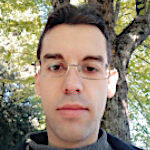The #SEAFOODTOMORROW research consortium in Horizon 2020 associates the widespread inclusion of algae in the diet with a promising scenario for human health and the environment. The benefits outweigh the risks, even assuming the use of kombu or kelp seaweed, which has been widely cultivated in Asia since the middle of the last century.
The recent study published in Frontiers in Nutrition (Vellinga et al., 2022) confirms this assumption as a result of an analysis of the levels of exposure to iodine, sodium and heavy metals that populations in the Netherlands and Portugal might incur if some commonly used foods were replaced, to the extent of 10 percent, with products made from this seaweed. (1)
#SEAFOODTOMORROW, #EcoeFISHent, #PROFUTURE
Three EU research projects aspire to innovate the supply of protein, Omega-3 fatty acids, micronutrients and bioactive substances from sustainable and/or renewable marine resources:
– SEAFOODTOMORROW is dedicated to the development of environmentally friendly aquaculture systems, the enhancement of neglected fish species, the use of algae in human nutrition, (2)
– ProFuture focuses on sustainability, including economic sustainability, in microalgae production and their use in a variety of food products,
– EcoeFISHent works on the virtuous recovery(upcycling) of side streams from the fish supply chain (waste), with nutraceutical, cosmetic and pharmaceutical fate. (2)
Algae in the diet, the untapped treasure
Algae cultivation in recent decades has seen increasing interest related to the versatility of their use-to produce food and feed, fertilizers and biostimulants in agriculture (e.g., Algatan), and fuels-and especially significant biomass yields. This is particularly important from a sustainable development perspective because of their extraordinary ability to absorb carbon and thus contribute effectively to combating the climate emergency.

The composition of algae varies among species but is characterized, in general terms, by appreciable levels of protein, marine omega-3 fatty acids (EPA and DHA), dietary fiber, and polysaccharides. As well as vitamins (A, C, E), iodine, antioxidants. Their consumption is entrenched in Japan (9.7 g/day average per capita) but still sporadic in the rest of the planet.
Iodine and sodium
Seaweed may contain high concentrations of iodine, in line with the requirements for use of the nutrition claim ‘rich in iodine‘ in Annex to reg. EC 1924/2006. Their consumption can therefore help overcome iodine deficiency-still endemic in many areas, in Europe and worldwide-to which hypothyroidism, growth and development disorders, goiter, and thyroid cancer are associated. (3) Excessive iodine intakes on the other hand can stimulate excessive production of thyroid hormones.
EFSA (2006) confirmed the iodine values already established by SCF (2002), adequate intake (AI) 150 μg/day and tolerable upper intake level (UL) at 600 μg/day for adults, UL 200 μg/day for children age 1-3 years. (4) Thus, the European Commission indicated 20 mg/kg as the reference value for monitoring algae and halophytes (e.g., salicornia). (5) The high concentration of sodium, in algae and plants grown in brackish water, should also be considered. Excluding the addition of salt in foods containing them, to avoid dangerous excesses.
Heavy metals
Heavy metals (e.g., arsenic, cadmium, lead, mercury) can accumulate in some algae, as with fish, depending on species and water pollution, which varies with levels of industrialization in nearby coastal areas.
Monitoring is essential as early as self-monitoring, since contamination of food and feed with heavy metals is a source of risk for the onset of numerous chronic-degenerative diseases (6,7).
‘Algae in the diet’ scenario
The researchers identified eating habits in Portugal, the Netherlands and Japan, where the presence of algae in the diet ranges from 0 (in the two European countries) to 9.7 g/day. To simulate an alternative scenario, where 10% of pasta, bacon, and lettuce in PT and NL is replaced with food products with kombu seaweed, or kelp. (8)
Partial replacement of foods with algae could actually increase daily mineral exposure, nearly double iodine intake (which is still deficient in many populations) and heavy metals considered, but without leading to an increase in risk factors. (9)
Interim conclusions
This study shows that the inclusion of seaweed in the daily diet can provide benefits, for health and the environment, that outweigh any contraindications related to mineral and heavy metal intakes.
The hypothesis of reaching the frequency and levels of algae consumption simulated in the research in Europe is still far from reality, although it is a promising prospect and worthy of further study.
Dario Dongo and Andrea Adelmo Della Penna
Notes
(1) Vellinga et al. (2022). Increasing Seaweed Consumption in the Netherlands and Portugal and the Consequences for the Intake of Iodine, Sodium, and Exposure to Chemical Contaminants: A Risk-Benefit Study. Front. Nutr. 8:792923, https://doi.org/10.3389/fnut.2021.792923
(2) Dario Dongo and Andrea Adelmo Della Penna. Neglected fishes, #poormabobs. ISS study, SAFEFOODTOMORROW research project. GIFT(Great Italian Food Trade), 5.7.21, https://www.greatitalianfoodtrade.it/salute/pesci-negletti-poverimabuoni-studio-iss-progetto-di-ricerca-safefoodtomorrow
(3) Bednarczuk et al. (2021). 2021 European Thyroid Association Guidelines for the Management of Iodine-Based Contrast Media-Induced Thyroid Dysfunction. Eur. Thyroid J. 10(4):269-284, https://doi.org/10.1159/000517175
(4) EFSA (2006). Statement on a request from the commission related to iodine in seaweed. https://doi.org/10.2903/j.efsa.2006.1046
(5) EU Recommendation 2018/464, on the monitoring of metals and iodine in seaweed, halophytes and seaweed products. https://bit.ly/3IeXuzB
(6) Zaynab et al. (2022). Health and environmental effects of heavy metals. Journal of King Saud University – Science 34(1):101653, https://doi.org/10.1016/j.jksus.2021.101653
(7) ANSES (2020). Opinion of the French Agency for Food, Environmental and Occupational Health & Safety on “maximum cadmium levels for seaweed intended for human consumption.” ANSES Opinion, https://www.anses.fr/en/system/files/ERCA2017SA0070EN.pdf
(8) Seamorefood. Seamore I sea bacon, https://www.seamorefood.com/i-sea-bacon/ Seamore I sea pasta https://www.seamorefood.com/i-sea-pasta/
(9) The baseline scenario already indicated the presence of risks in relation to sodium and arsenic inputs





